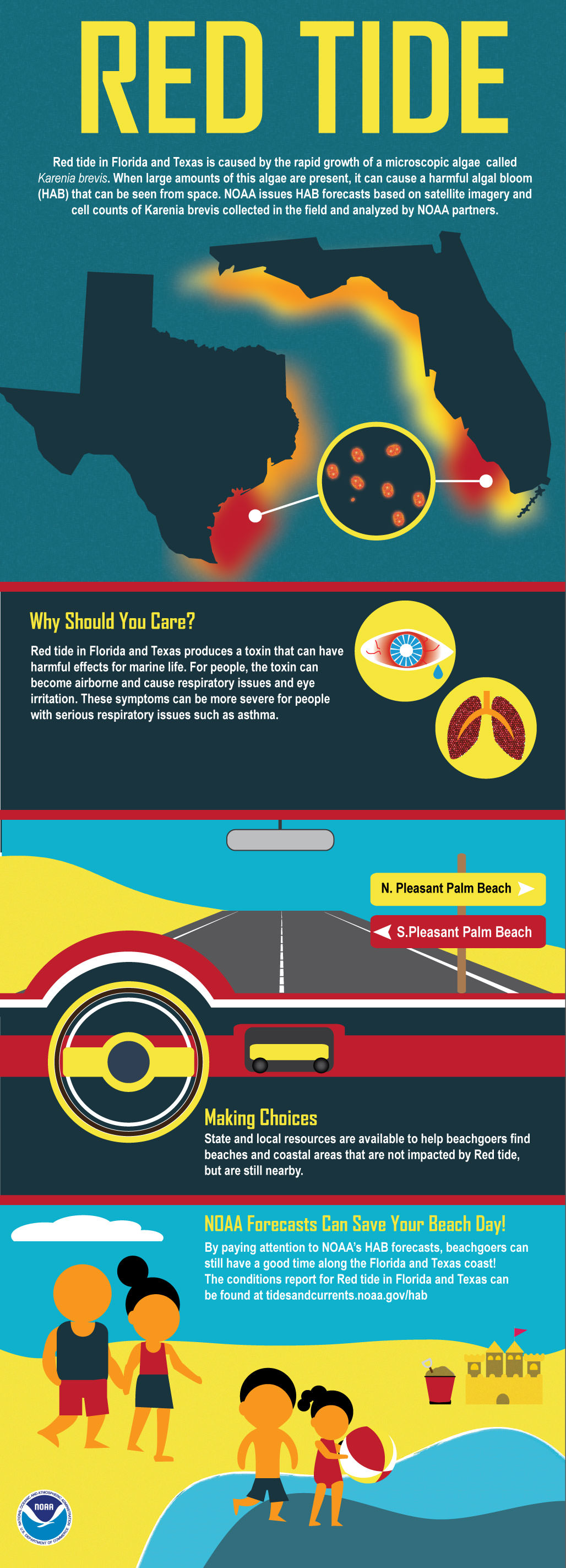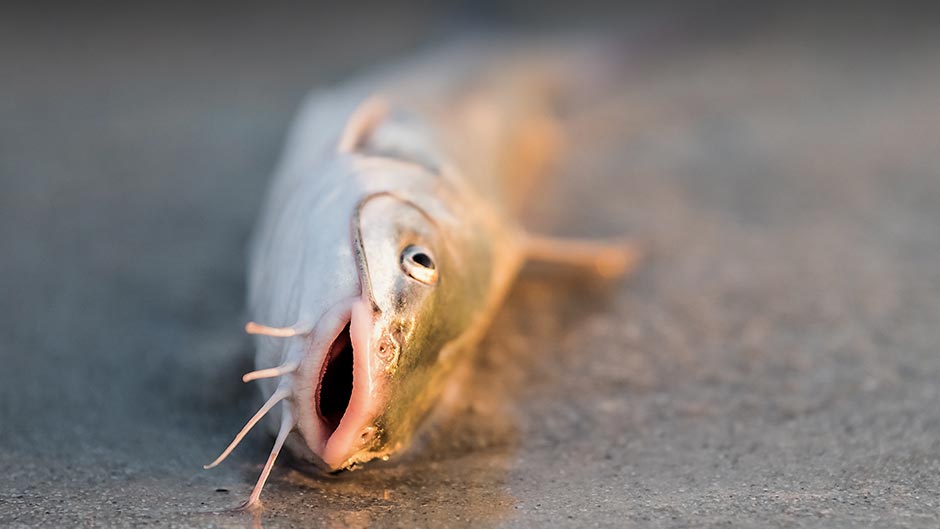The worst red tide event to hit Florida’s Southwest Coast in more than 12 years is killing marine life in unprecedented numbers, as dead fish, sea turtles, manatees, and even the carcass of a whale shark have washed up on the beaches and clogged canals from Tampa Bay to the Florida Keys.
Pelicans, double-crested cormorants, and mallard and mottled ducks are also being affected by the toxic bloom, which started last October. And what’s worse is that authorities have said the wildlife found dead on beaches or on the ocean surface is only a fraction of the actual toll because most of the dead animals sink to the bottom of the sea.
The National Oceanic and Atmospheric Administration defines red tide, or harmful algal bloom, as a rapid growth of microscopic algae. Some produce toxins that have harmful effects on people, fish, marine mammals, and birds. In Florida and Texas, this is primarily caused by the harmful algae species, Karenia brevis. It can result in varying levels of eye and respiratory irritation for people, which may be more severe for those with pre-existing respiratory conditions such as asthma. The blooms can also cause large fish kills and discolored water along the coast.
Larry Brand, a professor of marine biology and ecology at the University of Miami Rosenstiel School of Marine and Atmospheric Science who is an expert in the ecology of algae and phytoplankton, tells UM News what we should know about red tide:
Why is this particular red tide incident on Florida’s southwest coast so bad? It started in October and has lasted well past the normal season.
It is probably primarily because of the large amount of nutrient-rich water coming down the Caloosahatchee River into the coastal waters.
Fish, sea turtles, and manatees are among the casualties of the red tide on Florida’s southwest coast. What impact does it have on human health, and what precautions should people take?
Brevetoxin produced by the red tide is a powerful neurotoxin. Hospital records along the west coast of Florida show a 50 percent increase in people going to the hospital for various types of respiratory distress and a 40 percent increase for gastrointestinal distress. People should not swim in the water, eat seafood from it, or breathe the air near it.
What kinds of efforts, if any, can be initiated to combat red tide and lessen its impact?
There are no short-term solutions to this problem. Long term, we need to reduce the nutrients that feed the red tide and make it worse.
You’ve done extensive research in this area. What major study on red tide are you currently conducting, and what’s the importance of that investigation?
Of all the different types of Harmful Algal Blooms around the world, the Florida red tide is the only one to be examined carefully for the toxic aerosols that it produces. I, along with some of my colleagues, am now examining if other types of algae are also producing toxic aerosols, particularly the ones currently causing problems in Lake Okeechobee, the Caloosahatchee River, St. Lucie canal and estuary, Indian River Lagoon, and Florida Bay.
How critically important is it that more research be done on red tide, even given the current political climate when research funding is dwindling?
Of great importance is identifying and quantifying the relative importance of the different sources of nutrients, such as fertilizer and sewage, that feed the red tide and make it worse. This information is needed in order to reduce the amount of nutrients. Unfortunately a lot of disinformation is promulgated by economic and political special interests about the sources of nutrients, so we need objective facts to counter this and provide accurate information to the public and policymakers.


